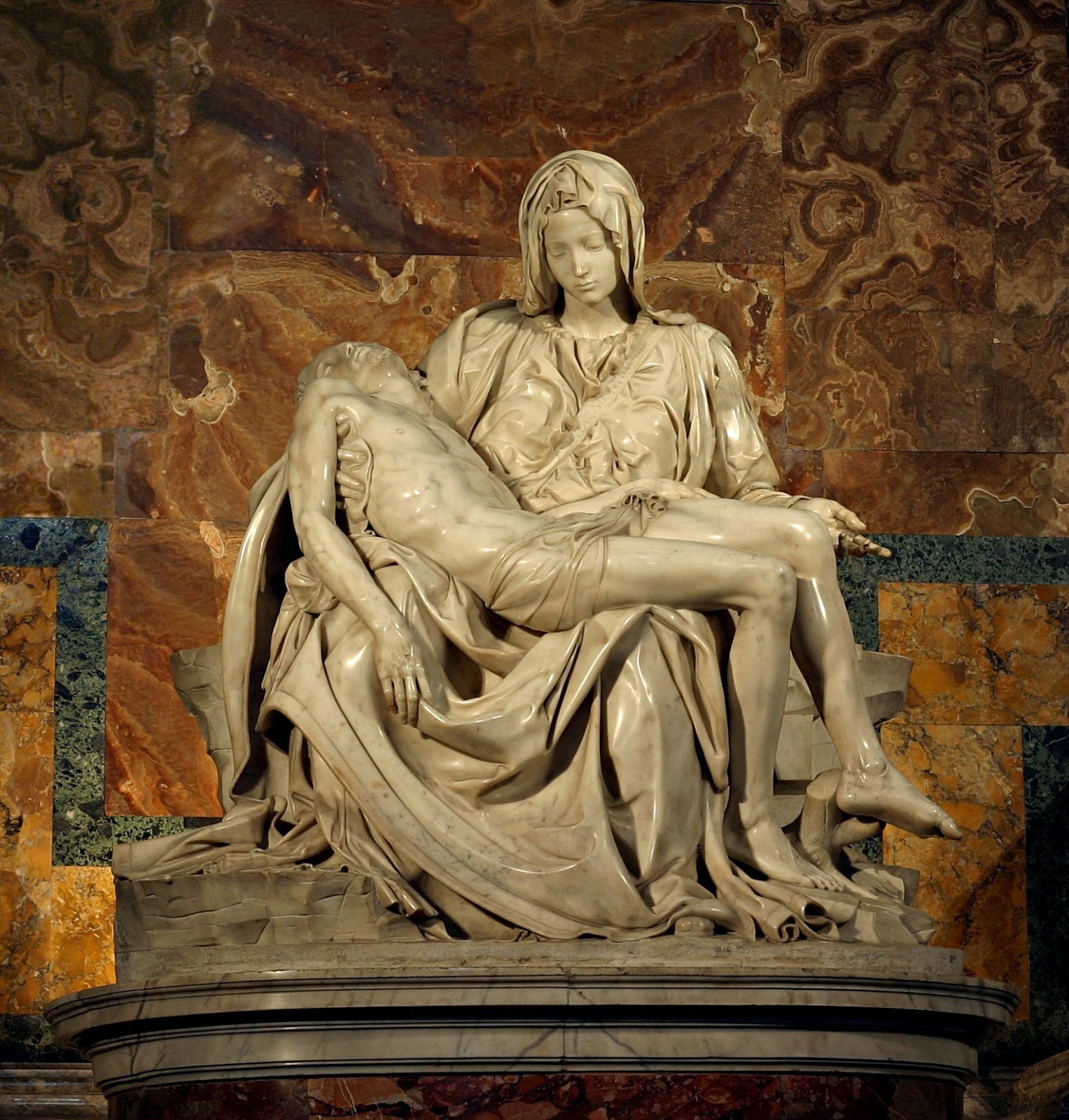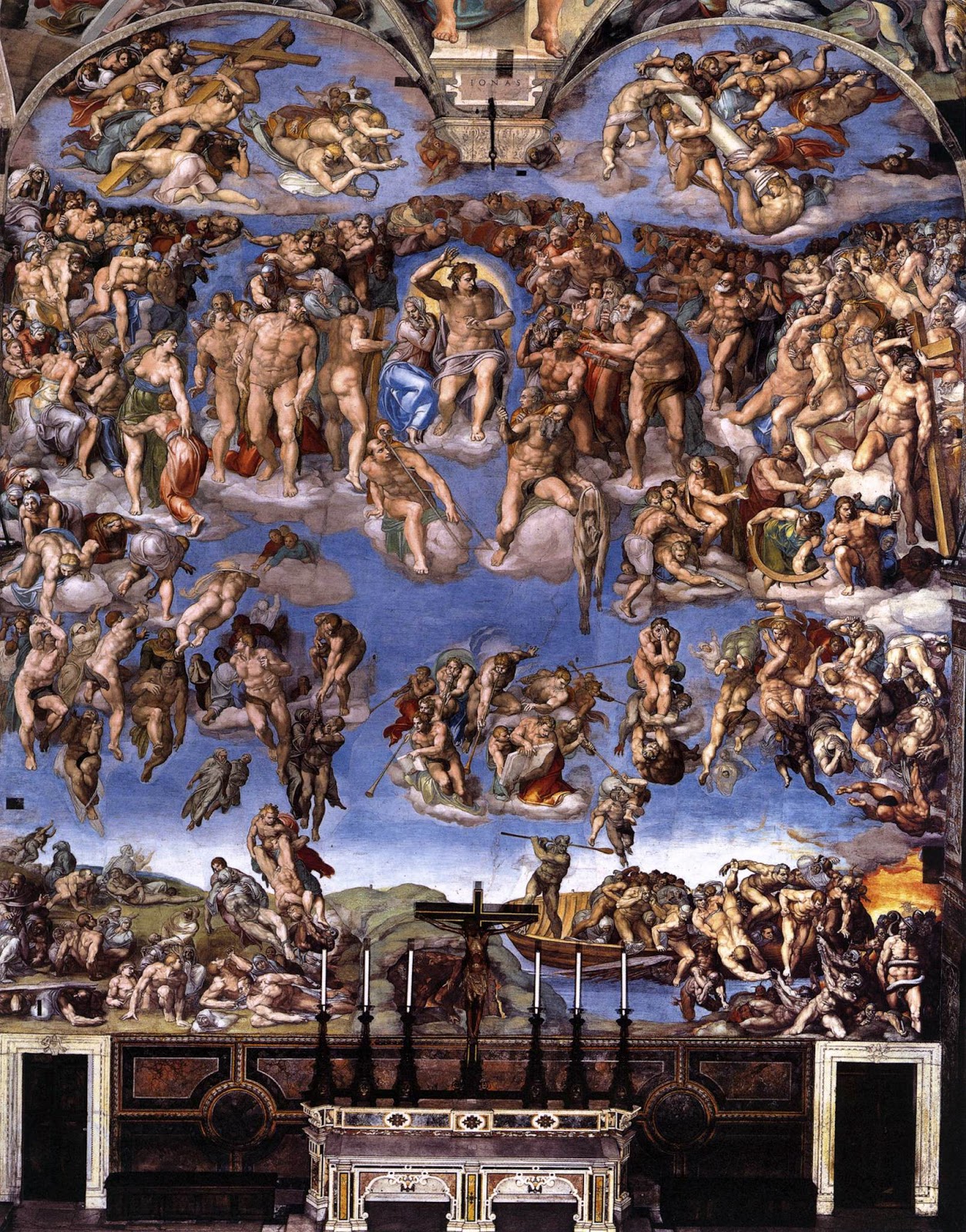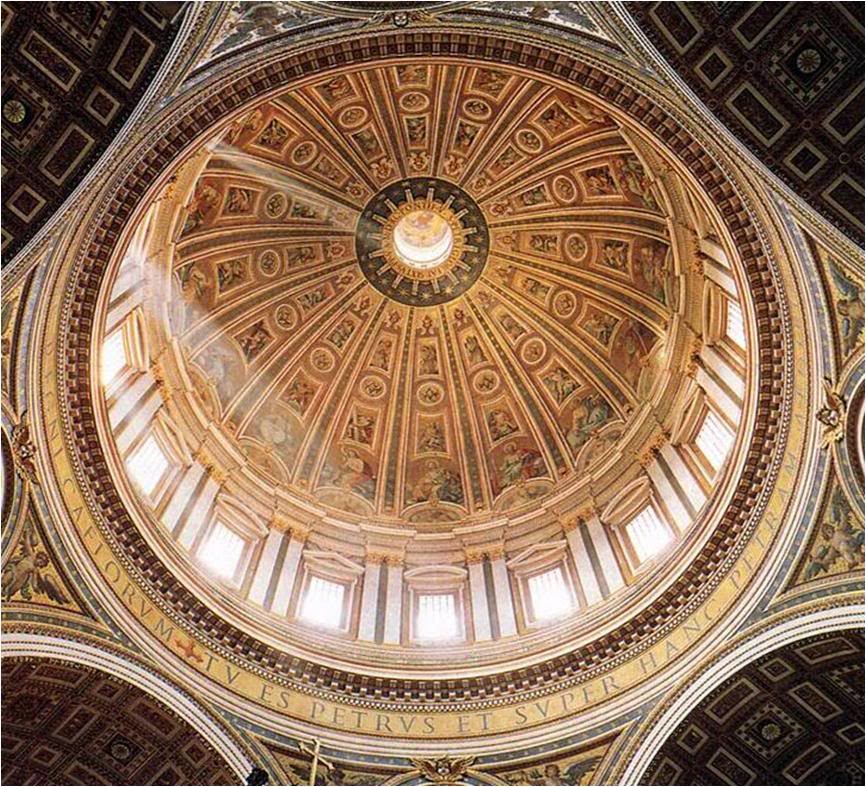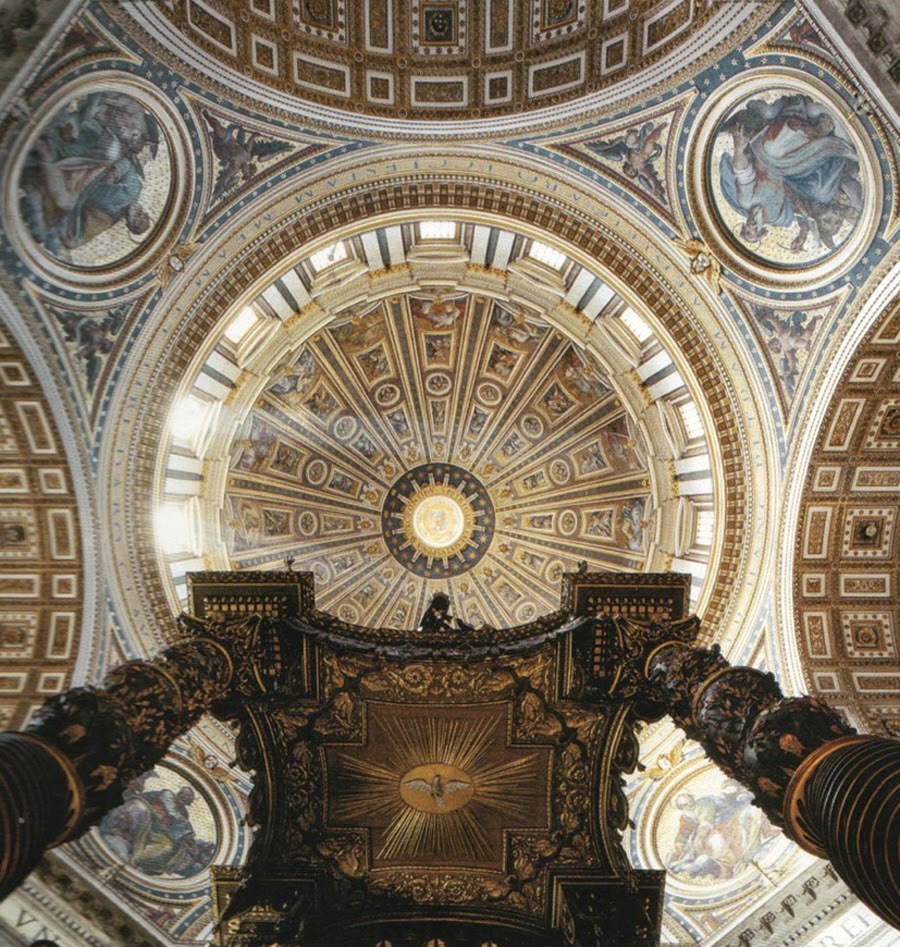 |
| Michelangelo, painted by Marcello Venusti in 1535. |
Michelangelo Was No Beauty
It is no exaggeration to say that Michelangelo Buonarroti (1475-1564) was a complicated human being. The man and the myth that grew around him even in his own lifetime are difficult to disentangle. Arrogant with others and constantly dissatisfied with himself, he nonetheless penned tender poetry. In spite of his legendary impatience and indifference to food and drink, he committed himself to tasks that required years of sustained attention, creating some of the most beautiful human figures ever imagined.
He constantly cried poverty, even declaring to his apprentice Ascanio Condivi: "However rich I may have been, I have always lived like a poor man," yet he amassed a considerable fortune that kept his family comfortable for centuries. And though he enjoyed the reputation of being a solitary genius and continually withdrew himself from the company of others, he also directed dozens of assistants, quarrymen, and stonemasons to carry out his work.
The second of five sons, Michelangelo di Lodovico Buonarroti Simoni was born in 1475 in the town of Caprese, located in the Florentine territory of Italy near Arezzo, Tuscany. The son of a magistrate, Michelangelo shocked his family in 1488 by becoming an apprentice to painter Domenico Ghirlandaio and then studied with sculptor Bertoldo di Giovanni in the Medici gardens in Florence. While honing his skills, he was influenced by prominent people who expanded his views on the arts, especially Lorenzo de' Medici and his school, who introduced him to poets, artists, and scholars in his inner circle.
Early in his career, Michelangelo pursued artistic perfection in his representation of the human body. His meticulousness led him to anatomy, which he studied fervently, even gaining permission from the prior of the church of Santo Spirito to study cadavers in the church's hospital. During this time, he began a lifelong practice of drawing and sketching to prepare for future works of art and architecture.
Following the death of Lorenzo de' Medici in 1492, Michelangelo left Florence, moving from Venice to Bologna and eventually Rome, where he continued sculpting and studying classical works. During this period the French ambassador in the Holy See commissioned the "Pietà" for Saint Peter's Basilica in the Vatican (1498-99).
 |
| Michelangelo's Pietà in St. Peter's Basilica in the Vatican |
| Michelangelo's_David |
Back in Rome, Pope Julius II (1503-13) commissioned the artist to create his papal tomb, which features the famous statue of Moses. Michelangelo worked on the tomb for 40 years, frequently stopping work for other commissions, the first major interruption being the commission to paint in the Sistine Chapel (1508-12).
Michelangelo painted more than 300 figures on the ceiling. This proved to be both a mentally and physically arduous task for the artist, who exhaustively planned the paintings through his process of drawing and sketching.
 |
| Medici Chapel, was designed as a burial pantheon for the Medici family. |
| Michelangelo's Sagrestia Nuova in the Cappelle Medicee (Medici Chapels) of Florence, Italy. Detail of the tomb of Giuliano de' Medici, Duke of Nemours |
 | |
| Buonarroti Michelangelo, Last Judgment, ca 1537 1541, Fresco,Cappella Sistina, Vatican |
The Last Judgment was
commissioned from Michelangelo by Pope Clement VII (1523-1534) shortly before
his death. His successor, Paul III Farnese (1534-1549). forced Michelangelo to
a rapid execution of this work, the largest single fresco of the century.
While completing "The Last Judgment," Michelangelo focused his attention back on architecture. In 1536 he designed the Piazza del Campidoglio, which rationalized the structures and spaces of Rome's Capitoline Hill, and in 1546 was appointed architect of Saint Peter's Basilica and designed its dome. His last plans were for the Porta Pia, a gate in the Aurelian Walls of Rome (1561-65).
 |
| St.Peter'sDome-Int. Some sense of perspective is gained when you look at the lettering at the base of the dome, which reads Tu es Petrus et super hanc petram aedificabo ecclesiam meam etc. |
| Main_Dome_of_Saint_Peter's_Basilica_photo-2 |
 |
| Dome-interior-St.-Peters-Basilica-Vatican-City-Rome-Italy |
 |
| St.Peter'sDome-Int-Partial |
 |
| Roma_Vatican_Saint_Peter_Dome_Mosaic |
 |
| Interior view of dome and canopy in St. Peter's Basilica, Vatican City, Italy. The dome soars higher than a football field on end, 448 feet from the floor of the cathedral to the top of the lantern. |
Portraits: Michelangelo Was No Beauty
Michelangelo Buonarroti, one of the greatest figures of western civilization, was an ugly and rather unclean man, according to a series of rare, contemporary portraits and writings on show in Florence.
 |
| Casa Buonarroti - The great sculptor, painter, and architect Michelangelo 1475-1564 lived here. His house was transformed into a museum, bequeathed to the city. |
 |
| House of Michelangelo Buonarroti |
Running at the museum of the Casa Buonarroti until the end of the month, the exhibition,
"The Face of Michelangelo," mercilessly reveals that the artist did not use himself as a model for his celebration of male beauty when he sculpted David.
 |
| You can glimpse the human portrait of Michelangelo by Michelangelo and the like, such as the contemporary painter Giorgio Vasari painted when he left a letter, in this exhibition. |
"Movies have always portrayed Michelangelo as an attractive, good-looking man.
On the contrary, he wasn't handsome at all," exhibition curator Pina Ragionieri, the director of Casa Buonarroti, a house the artist bought in 1508, told Discovery News.
"Most of all, he was perfectly aware of his ugliness and did not want to be portrayed. Indeed, he left no documented self-portrait."
Portraits by contemporary artists, along with an unmerciful description by the 16th century painter and art historian Giorgio Vasari, are also on display.
All the works leave no doubt about Michelangelo's reluctance to pose for portraits.
Disfigured at age 17 when a fellow student smashed his nose, Michelangelo had small eyes, large ears, thin lips and a forked, thin beard.
Nevertheless, over the centuries since his death, Michelangelo's image improved significantly and his ugliness almost disappeared. In posthumous portraits, the artist appeared elegantly dressed, with a penetrating gaze and imposing presence.
"These images are testament to myth and do not necessarily show the person as he looked in his lifetime. The individual assumes a more refined face, more elegant clothes, more courtly accoutrements, or a statelier pose," Columbia University art historian Lynn Catterson told Discovery News.

In reality, Michelangelo wasn't exactly a refined man. In fact, he likely smelled terribly bad. According to Vasari, "he wore stockings of dog-skin constantly for months together, so that when he took them off the skin of the leg often came away with them." "The fact that Michelangelo wasn't either handsome or particularly considerate about his personal care isn't so important. One should look at his letters and poems. They are his real, inner self-portraits," Ragionieri said.
 |
| St_Peter's_Square,_Vatican_City_-_April_2007 |
 |
| sonnet with caricature |
"This portrait reveals much about Michelangelo -- that he is right-handed and that, in his artist's mind, bodies need no clothes, including his own," Catterson said.
 |
| the_genesis_sistine_chapel_Rome_Italy |
*original post date September 20, 2008
Source:
Discovery News
RELATED MATERIALS
http://entertainment.howstuffworks.com/michelangelo.htm
Discovery Atlas Video - Italy: Arts and Culture in Florence. Travel back in time to the Renaissance period in Florence, Italy
http://michelangelo.syr.edu






wonderful post, my dear... thank you. )0(
ReplyDeleteThanks, PurpleMoonChild :-)
ReplyDeleteYou are very welcome... and you may call me Liza.
ReplyDeleteBlessed be. )0(
This is an outstanding piece and the single image of a photograph freezes the history for all time for all to see.
ReplyDeleteOk, Liza...
ReplyDeletebut you have a beautiful
craft name, indeed...
like mine :-)